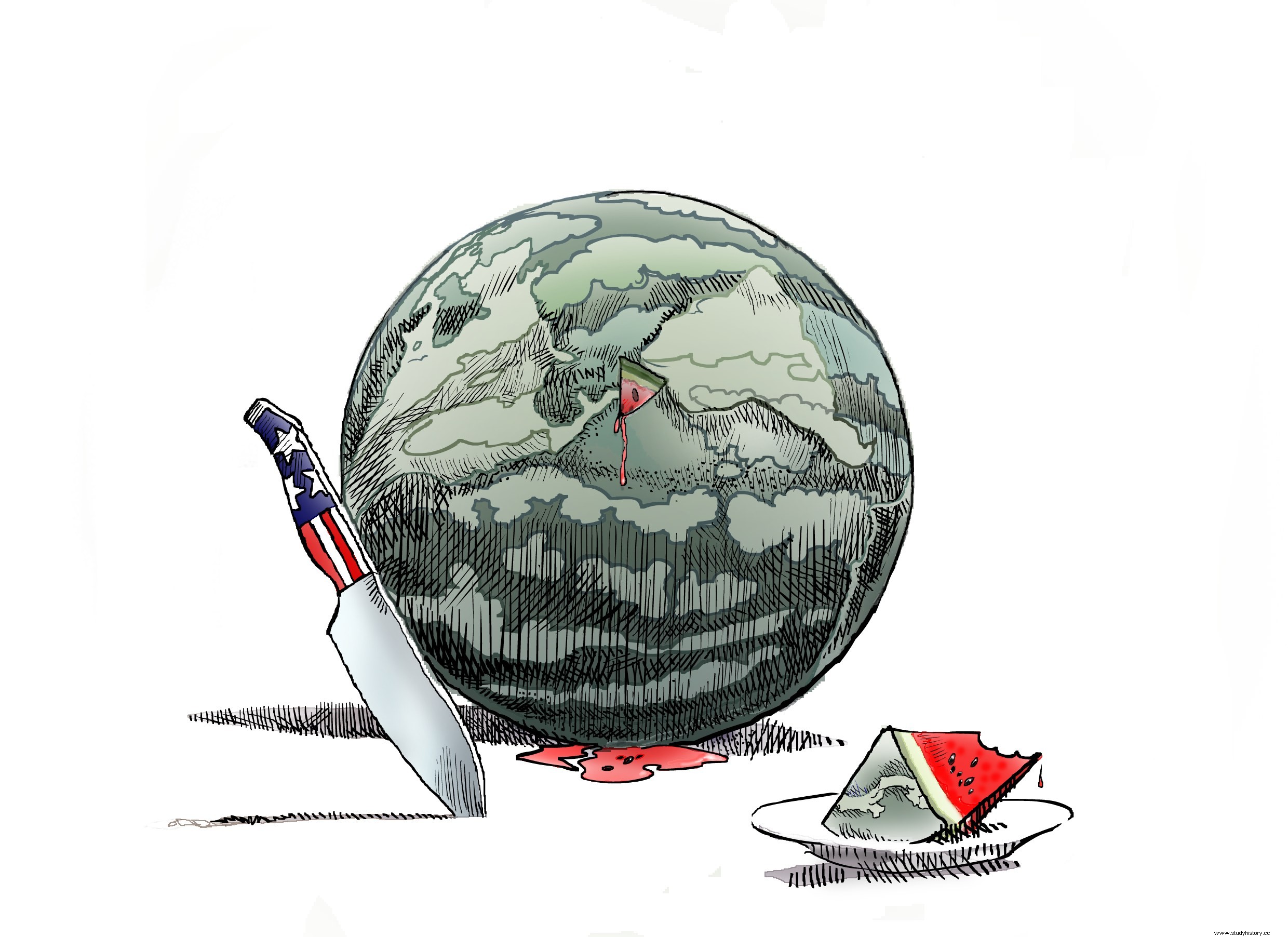The Mallarino-Bidlack Treaty , signed on December 12, 1846 between the United States and the Republic of New Granada (now Colombia and Panama), was a trade reciprocity agreement between the two countries. The problem is that it was tremendously favorable for the economic and commercial interests of the US and, worse still, for US citizens over the native population in the territory of New Granada. In addition, many made use of that superiority, legally acquired , and carried out acts of abuse, violence and irresponsibility that sharpened suspicion and resentment among the local population. All that was missing was a spark to ignite that latent bomb... a slice of watermelon .

Illustration Xurxo Vázquez
The incident took place on April 15, 1856 when a group of Americans, including Jack Olivier They walked through the railway station after spending several hours drinking. This Jack -cooler than Mario Conde dancing a chotis- took a slice of watermelon from a street vendor. When the owner, José Manuel Luna , told him that the price was 5 cents, Jack turned around and left. The vendor demanded payment again, and Jack continued to ignore it. José Manuel took out a knife and threatened him, but Jack, haughty and proud, drew his firearm and pointed it at him. This incident was watched by all those present and led to a street fight between Americans and the local population that ended with a balance of 15 dead and 16 wounded Americans... on the local side:two dead and 13 wounded.
That conflict had international consequences:the Americans accused the local authorities of not maintaining order and these, supported by the report of the French and British consuls, accused Jack's gang of causing the incident. The US government, faced with a report from US commissioner Amos Corwine advising the immediate occupation of the isthmus, sent a contingent of 160 soldiers who took over the railway station. After three days of occupation, the soldiers withdrew without firing a single shot when the local authorities agreed to negotiate. On September 10, 1857, the Herrán-Cass Treaty was signed , by which the Republic of New Granada accepted its guilt and, in addition, set compensation in favor of the Americans of 412,394 dollars in gold for damages .
Illustration:Xurxo Vázquez.
Source:I never learned the list of the Gothic kings.
